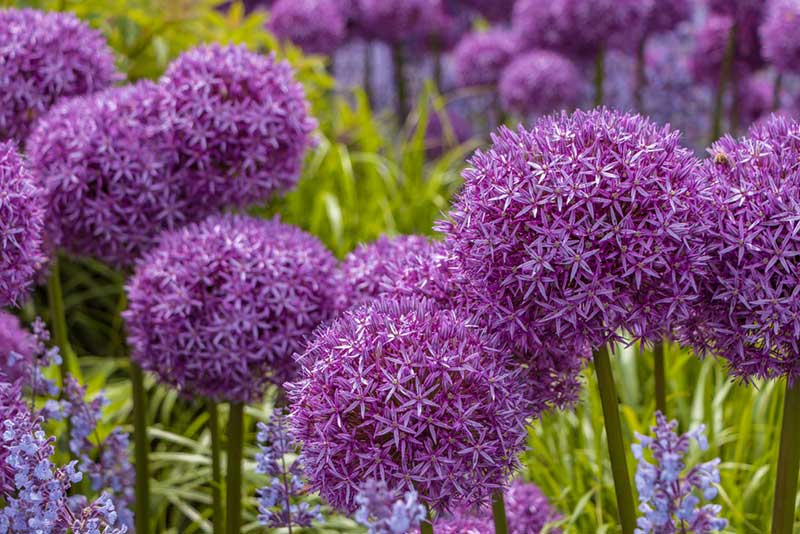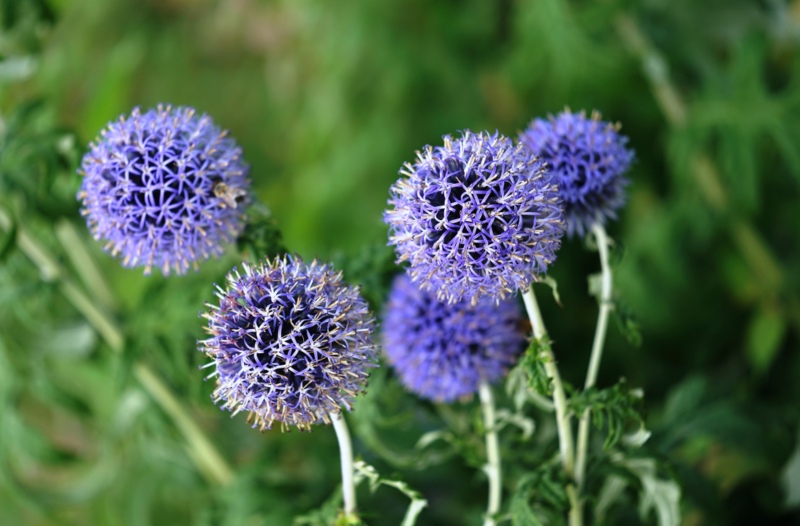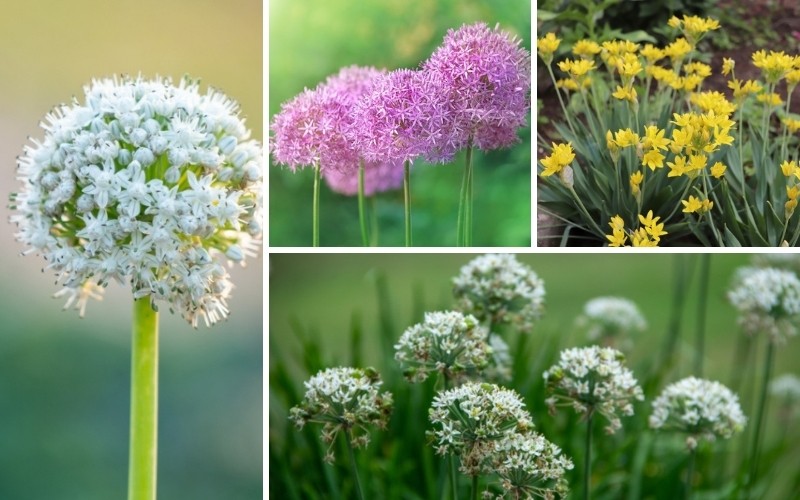
Allium is a genus of plants in the Alliaceae family that includes over 700 species. While some alliums are edible, such as onions, chives, garlic and shallots, many are cultivated for their striking globe-shaped blooms that range in color from white, yellow and pink to dazzling shades of blue and purple.
Often referred to as ornamental onions, alliums bring both color and texture to the flowerbed. These hardy perennials thrive in USDA plant hardiness zones 3 through 9, depending on the cultivar, and range in height from a mere 6 inches to 4 feet or more.
Light and Temperature Requirements
Alliums are sun-loving flowers and generally perform best in full sun, but some varieties do well in partial shade. As a rule, alliums grown in full sun produce bigger and brighter blooms. Alliums grown in southern climates may benefit from some shade from the hot afternoon sun.
Foliage dies back in the fall when cold weather arrives, but these perennials survive with temperatures to -40 degrees Fahrenheit in the winter, depending on the cultivar.
Watering
Alliums prefer soil that is slightly dry and do not require a lot of supplemental watering except in extremely dry spells. Provided the soil drains well, you can water your alliums as you do your other perennials but avoid growing them in soil that remains soggy as the bulbs will rot.
Check the soil and watch your plants for signs of wilting to determine the best watering routine for your alliums. Alliums grown in pots or containers require more frequent watering as the soil in containers dries out quickly in the summer sun. Water them until water runs freely through the bottom of the pot and allow the soil to dry before you water them again.
Soil & Fertilizing
Alliums are not fussy about their soil and will grow in average to poor soil as long as it drains well but perform best is soil high in organic matter. Prepare the soil for your alliums by turning it to a depth of 8 to 12 inches. Add a 2- to 3-inch layer of organic matter, such as peat moss or compost, and work it into the soil. Peat moss is a good choice as alliums prefer slightly acidic soil with a pH between 5.5 and 6.5. Peat moss helps lower the pH of soil.
Alliums do not require excessive fertilizer. An application of bone meal or bulb fertilizer when they are planted in the fall and a light application of all-purpose fertilizer in the spring will get them off to a good start. Follow with fertilizer in mid-summer and again in the fall.

Deadheading and Pruning
The spent flower heads on alliums can be removed once they fade, but it is not necessary. Some enjoy the appearance of the seed head and allow it to remain. Otherwise, remove the faded flower from the plant by cutting the stem back to the ground level.
Planting Alliums
Alliums are perennials grown from underground bulbs. Because they bloom in early spring and summer the bulbs should be planted in the fall once the soil temperature is 60 degrees or below. This gives the bulbs time to form a strong root system before the soil freezes for the winter.
- Choose a location that receives at least 6 hours of direct sunlight a day.
- Turn the soil to a depth of 8 to 12 inches. Remove sticks, rocks or other debris.
- Add a 2- to- 3-inch layer of peat moss or compost and work it into the soil.
- Sprinkle 1 teaspoon of bone meal per bulb over the soil and work it in.
- Dig a hole three times as deep as the size of the bulb and position the bulb in the bottom of the hole. Large bulbs may need to be planted to a depth of 8 inches, while small bulbs can be planted to a depth of 2 to 4 inches.
- Space the bulbs 4 to 8 inches apart depending on the size of the bulb and the mature allium.
- Plant the bulbs in odd numbered clusters for the most dramatic effect. Groups of three, five or seven work well.
- Cover the bulbs with soil and firm it down with your hands to remove air pockets.
- Water the bulbs thoroughly to saturate the soil to the depth of the bulb.
- Water the bulbs again when the soil dries and keep the area slightly moist until the ground freezes.
Companion Plants for Alliums
Allium flowers can create a big statement in the garden but their long, slender stems that hold the flower aloft can look stark if they are planted alone. Their leaves can also turn yellow before blooming is done, leaving the garden looking in disrepair. Planting other perennials with attractive blooms and foliage to hide the stems creates a sensation in the garden. Try these perennials as companions to your alliums.
- Hosta
- Foxglove
- Peonies
- Astilbe
- Ornamental grass
- Poppies
Consider both the height and color of your alliums when choosing companion plants and look for plants that provide contrast. For example, deep purple globes of alliums amidst bright orange or yellow poppies with their papery appearance makes a bold garden statement.
Alliums also make delightful cut flowers. Add small allium blooms to vases of wildflowers or let giant alliums steal the show on their own.





